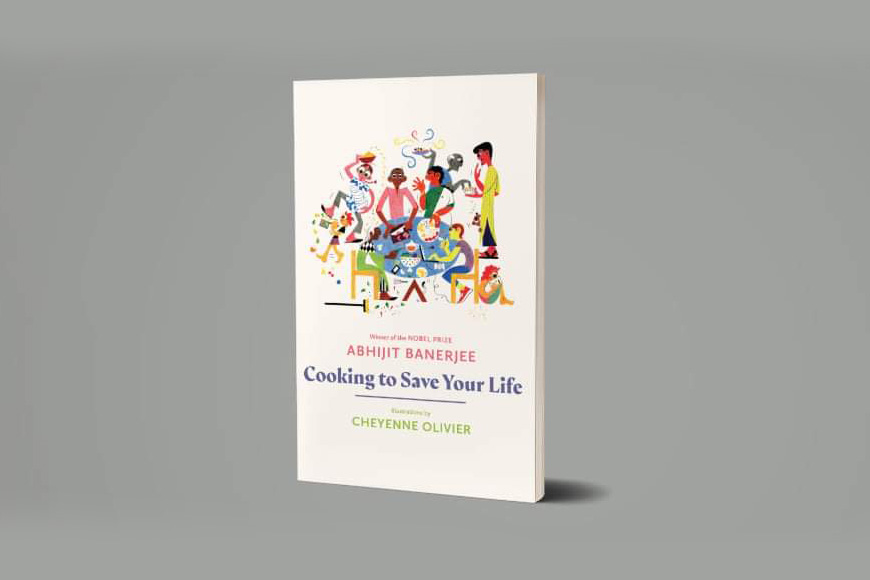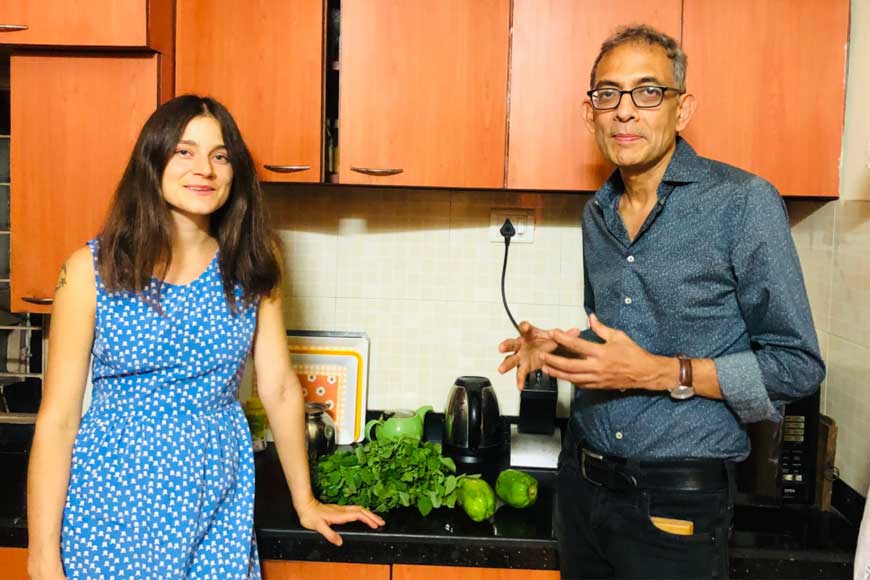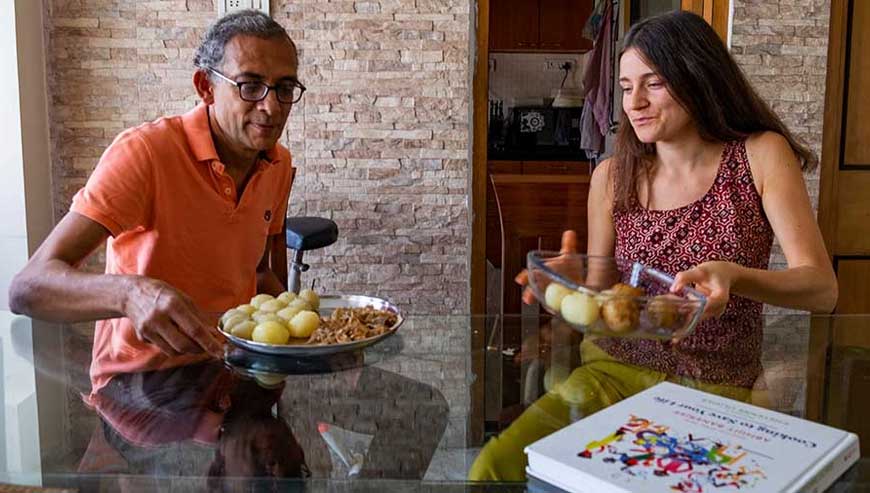A cookbook worthy of a Nobel Prize winner

From experience, and from reading and listening to countless interviews, Conversations with Nobel Prize-winning Abhijit Vinayak Banerjee (though he seems to have dropped the ‘Vinayak’ in recent times) are apt to switch from life, to world economics, to vegetables, to clothes, with equal ease. From a man of his eclectic tastes, a cookbook ought not to come as a surprise.
Neither is it any wonder that this is not merely a cookbook. From an account of how he began cooking to his various amusing culinary misadventures, to reflections on the life and society around him, to insights on global cultures and norms, this is as much a cookbook as it is a social commentary, spiced up with Banerjee’s dry, tongue-in-cheek humour, and accompanied by some lovely, geometric illustrations by Cheyenne Oliver, who has often cooked along with Banerjee.

Which is not to say that Banerjee does not take cooking seriously. In fact, it is something he indulges in every day, because he claims to be easily bored, and so must take time out during the day to do the things he likes. In an interview with Condé Nast Traveller just after the launch of the book in November 2021, Banerjee had said, “You are back home after work, you have no time, you don’t like the people who are coming for dinner and you have to somehow get through it. Or you adore someone and you want to impress them. The idea was to create a narrative which connects cooking to a human context.”
I know some economists dream of winning the Nobel Prize.
— Craig Garthwaite (@C_Garthwaite) November 15, 2021
But Abhijit Banerjee has only now achieved something to which one should truly aspire.
Congratulations on the new cookbook!https://t.co/kvghUX7Yh1
In his book, he writes, “Cooking is a social act. It happens in a context. Sometimes, a meal is a gift to your family, sometimes it’s an act of seduction, and sometimes it’s self-expression.”
Cooking to Save Your Life starts right from when Banerjee was 15, and first cooked a meal as a precursor to the “many thousands of meals” he would cook over the next four decades or so. For him, cooking was as experimental as his academic career, and he loved throwing up surprises in the kitchen. And in the end, the food he creates is based not just on time-tested recipes, but his experience of cooking it too, giving it a lovely twist. From an exotic Raspberry Ceviche to a humble yet comforting bowl of Dal, the book switches between a sophisticated palate and a familiar flavour that may remind the globetrotting economist of his hometown. As Banerjee writes: “The dal wraps around you like a soft shawl on a winter day.”
I can’t think of when I last had so much fun! The cereal killers cookbook club are cooking out of abhijit Banerjee’s cookbook- and you should see the spread! The tables at plat are groaning with food! We can’t wait to tuck in. @juggernautbooks pic.twitter.com/s0WqopmjKj
— Chiki Sarkar (@Chikisarkar) November 8, 2021
Which is why Banerjee infuses life into the recipes by tying them to anecdotes and memories. Like a Spanish-inspired chickpea soup that inspired a marriage proposal, a delicious and easy Bengali fish stew which surprised a smug friend; a clever Moroccan salad turning into a “conversation piece”, or even a rich biryani, which became a salve after a night of heavy drinking.

And it is perhaps his work in developmental economics that ensures that the ingredients he uses are neither too elaborate nor too expensive. Most of his recipes are simple and easy to cook, covering a wide geographical area from Nepal to Sicily, though Banerjee consciously sticks to his Bengali roots and uses lentils, khichuri, coconut milk, prawns etc. to his heart’s content. He feels “India’s greatest contribution to human civilisation is the simple dal dish,” and includes over 20 recipes for dal alone, that staple of a humble yet nutritious diet.
Nobel laureate Abhijit Banerjee with the lovely Cheyenne who is the illustrator for his cookbook .. lovely day spent with a man who teaches at MIT, has a Nobel prize, is a superb cook and great company .. #TheCerealKillers cookbook club ❤️ pic.twitter.com/llNxiyH5p4
— TheBourbonChef 🌈 ⭐️ (@BourbonGirl76) November 8, 2021
This paragraph from the book sums up his approach to food and cooking: “Indeed, the list of rich countries that eat most like the US is quite telling – it is Argentina, Australia and Uruguay, meat-producing countries of the New World, with Brazil and Chile not too far behind. My MIT economics colleague David Atkin has argued that this is the expected pattern – tastes evolve to match availability: people eat more of whatever is abundant.”
As we said at the beginning, an eclectic mind!










